February 2025
I’m imagining reading a bedtime story to my son, when he was little. We’re snuggled up, reading at one of his favourite books. It might be called Transport.
One page is dedicated to rail, another to road. The book says boats and trains and aeroplanes can carry people, but they can also transport goods, like boxes of apples from somewhere sunny.
He turns to me and asks me to name another two ways to transport goods. I say Trucks and then I’m stumped.
We turn the page: Canal, it says at the top.
My little son, in his onesie, likes canals. Look at the horses walking along the path pulling the boat, he says. Look at the people over there, loading bags on.
If he asked me how canals worked I wouldn’t have much to say. This would be it: You make a long dip for the water to run in, but it has to be next to a river. Every now and again there’s a gate, and water from the river runs into the canal.
The canal has to be kind-of flat. If it was slopey, it would be easy to get down but hard to get up. So you have flattish bits and steps.
The steps are called locks. You get the boat into a kind of room in the canal and then you drop down or rise up.
I was never a little boy so I’ve spent almost no time in my life thinking about canals. But there’s one that runs through Georgetown. It’s called the C&O Canal.
Guess where the canal meets the river? It’s at the first gate, named Water Gate. There’s a hotel there. It’s called The Watergate Hotel.
Ha!
The thing I like about the Georgetown section of the C&O canal is that it’s gorgeous. It’s one of my favourite places over here.
It’s literally the oldest part of Washington D.C. It was the Potomac Canal before it was incorporated into the C&O. The people who worked along its length, and lived close by, were a mix of rich and poor. Some of Georgetown’s oldest houses, near the canal, are very humble.
The brick structures that line the canal are stunning: beautifully-proportioned industrial buildings from the 1700s and 1800s.
It’s recently been developed. The buildings are all in use. There are expensive apartments with river views and chi-chi bakeries and cafes in alleys. The city has some spaces clear for the public, even providing tables and chairs and swinging seats looking up and down the water.
Much of this design was by the people who developed the New York Highline. So it’s very nice. There are bicycle paths and walking paths; you can do a three or four day cycle all 300km along the canal, arriving in Western Maryland.
When the development was completed in 2022, it was possible to pay for a ride on a canal boat in Georgetown. At the moment, the canal is pretty dry and I’ve never seen the boat running.
The entire canal and the land around it is a National Park. It’s clean and safe and lovely.
The important thing to know about canals is that their heyday was before rail. That’s why the big, beautiful brick warehouses are so old.
When Washington DC was declared the US capital, and when George Washington moved here as America’s first president, there was no rail.
Washington had big ideas to link the new capital to the West via waterways. The full name of the C&O Canal is the Chesapeake and Ohio Canal. Washington wanted the canal to go that far.
It got nowhere near.
Nonetheless, it operated for nearly 100 years (1831-1924). The C&O was a lifeline for communities along the Potomac River as coal, lumber, and agricultural products floated down to market. The canal had its golden age in the early 1870s. After that, rail took over. Wikipedia has the full history.
One of the things that C&O Canal enthusiasts like to highlight is that this canalised area of Washington DC predates Washington DC.
It’s true.
If you have a teenager who played Hamilton: The Musical in the car a lot, you’d know that the site that is now Washington DC was created as an appropriate location for the capital because it was neither North nor South.
In fact, it didn’t exist. Washington – named for America’s first president – was created out of parts of Maryland and Virginia. It also incorporated the existing settlements of Georgetown and Alexandria.
This was a compromise that satisfied all the member states of the new union. The capital bordered both the Southern state of Virginia and the Northern state of Maryland.
One afternoon, Ella and I were sitting at the canal eating falafel pitas. A guy wandered past us and introduced himself to a couple sitting nearby.
"Look at this!” he said grandly, gesturing up and down the canal.
“My uncle built this whole thing, with his own hands!”
Ella and I raised our eyebrows at each other. He might have sensed that. He might have shot a look at us.
“Fact!” he told the couple.
As a family, we use that a lot now. Barely a day goes by that one of us doesn’t throw an arm out and say “Fact!” to the others.

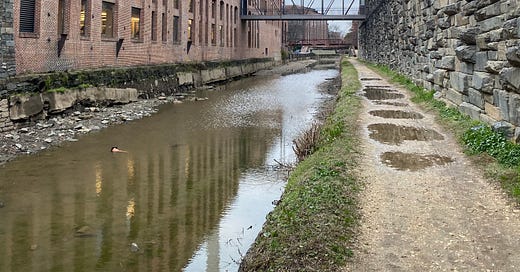



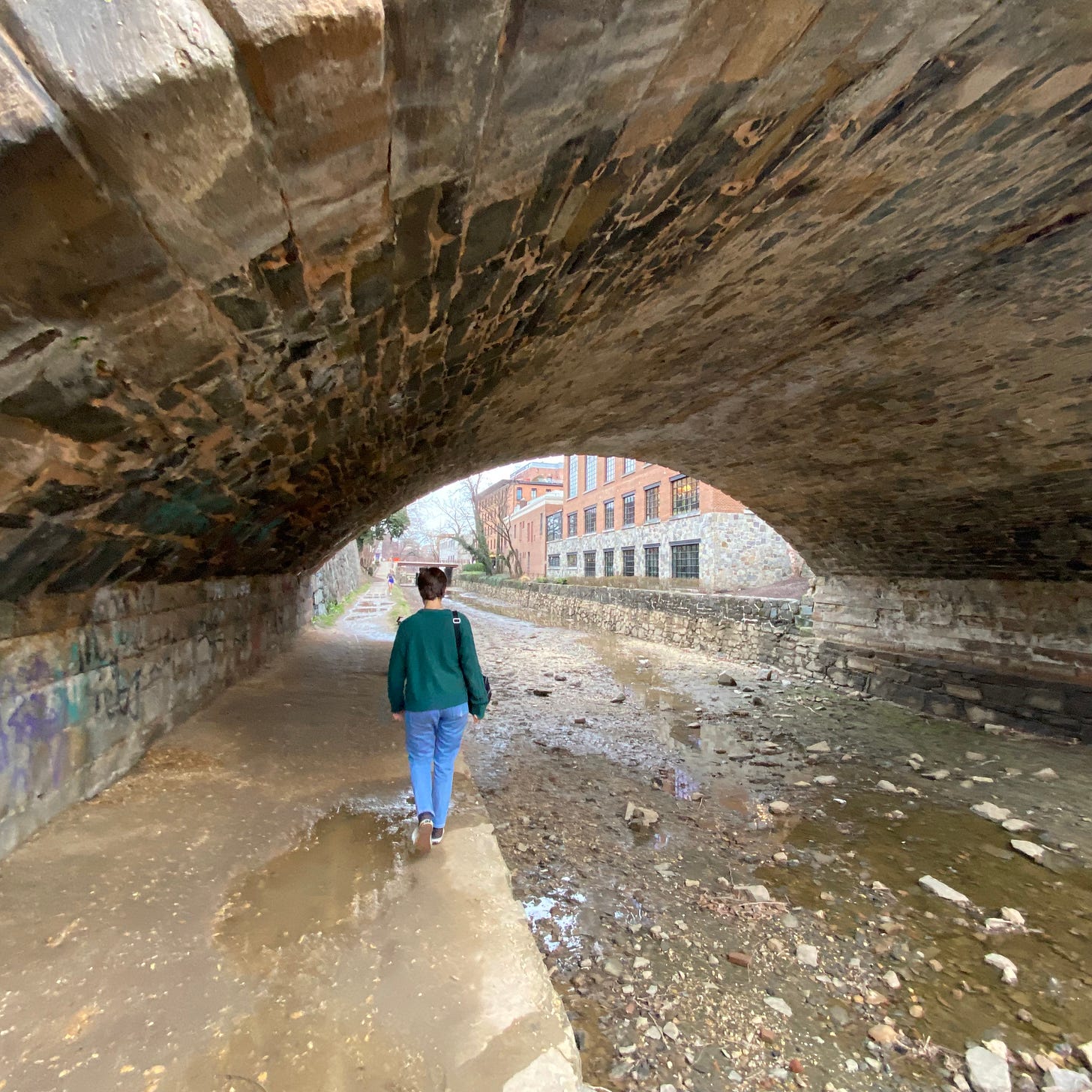
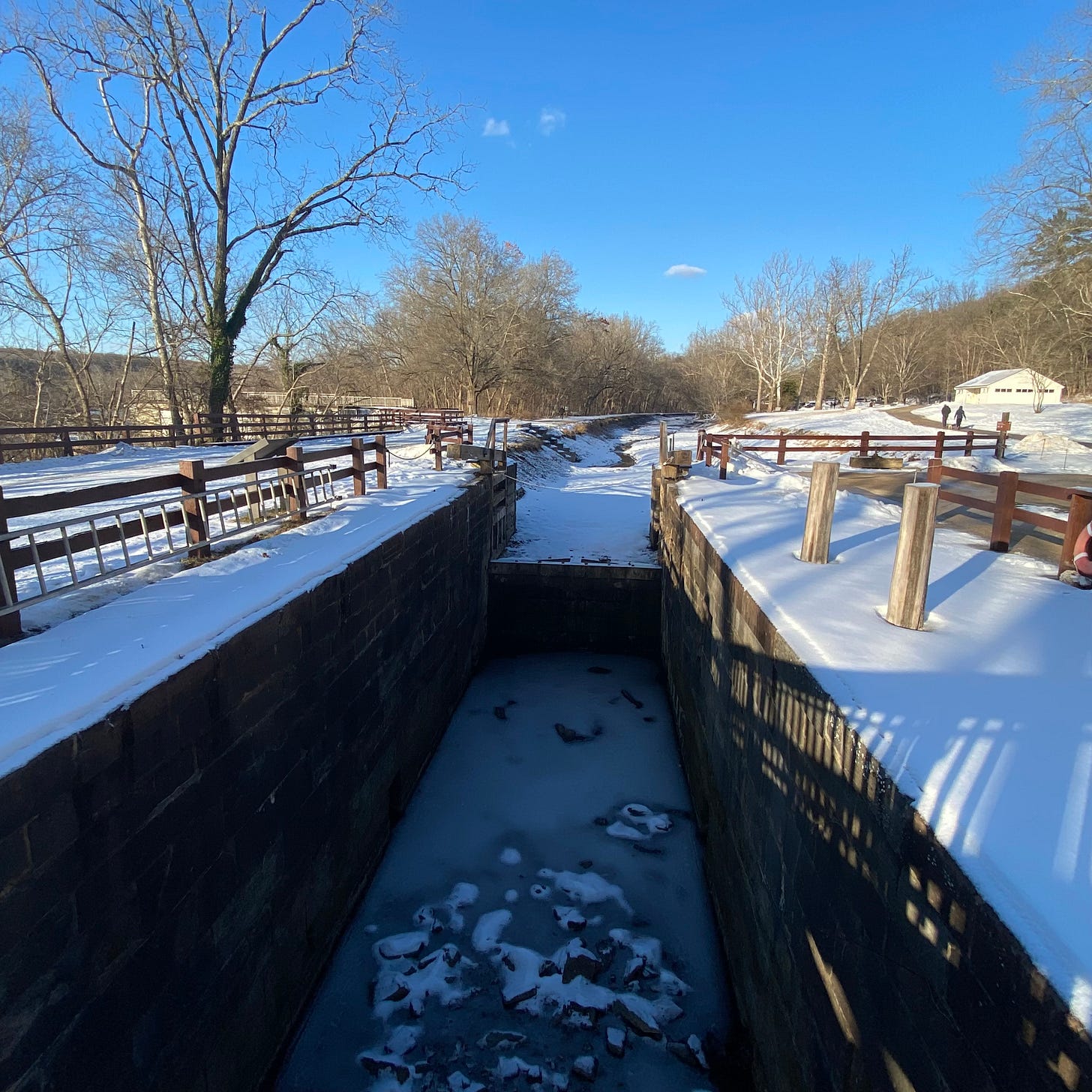
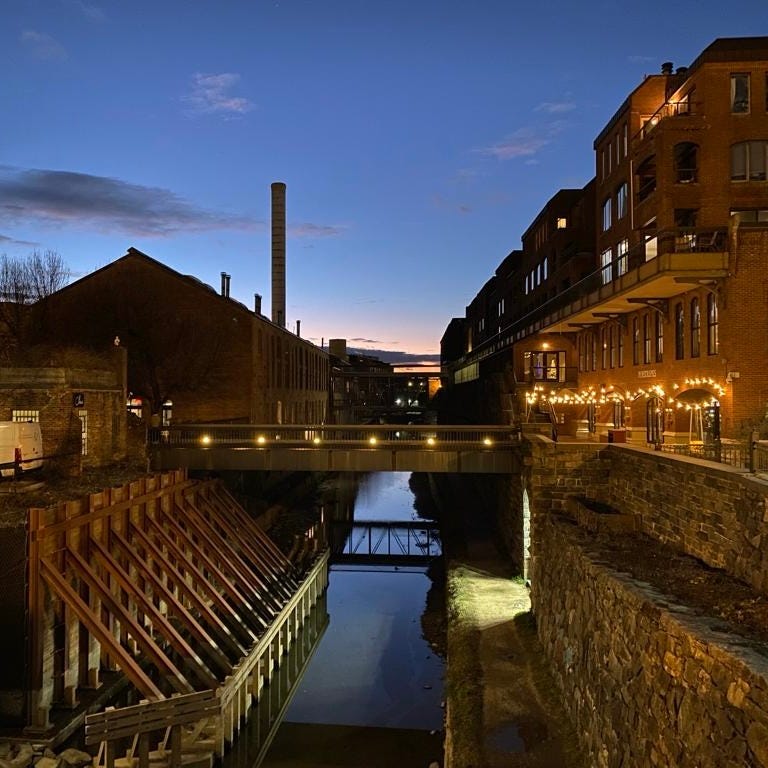
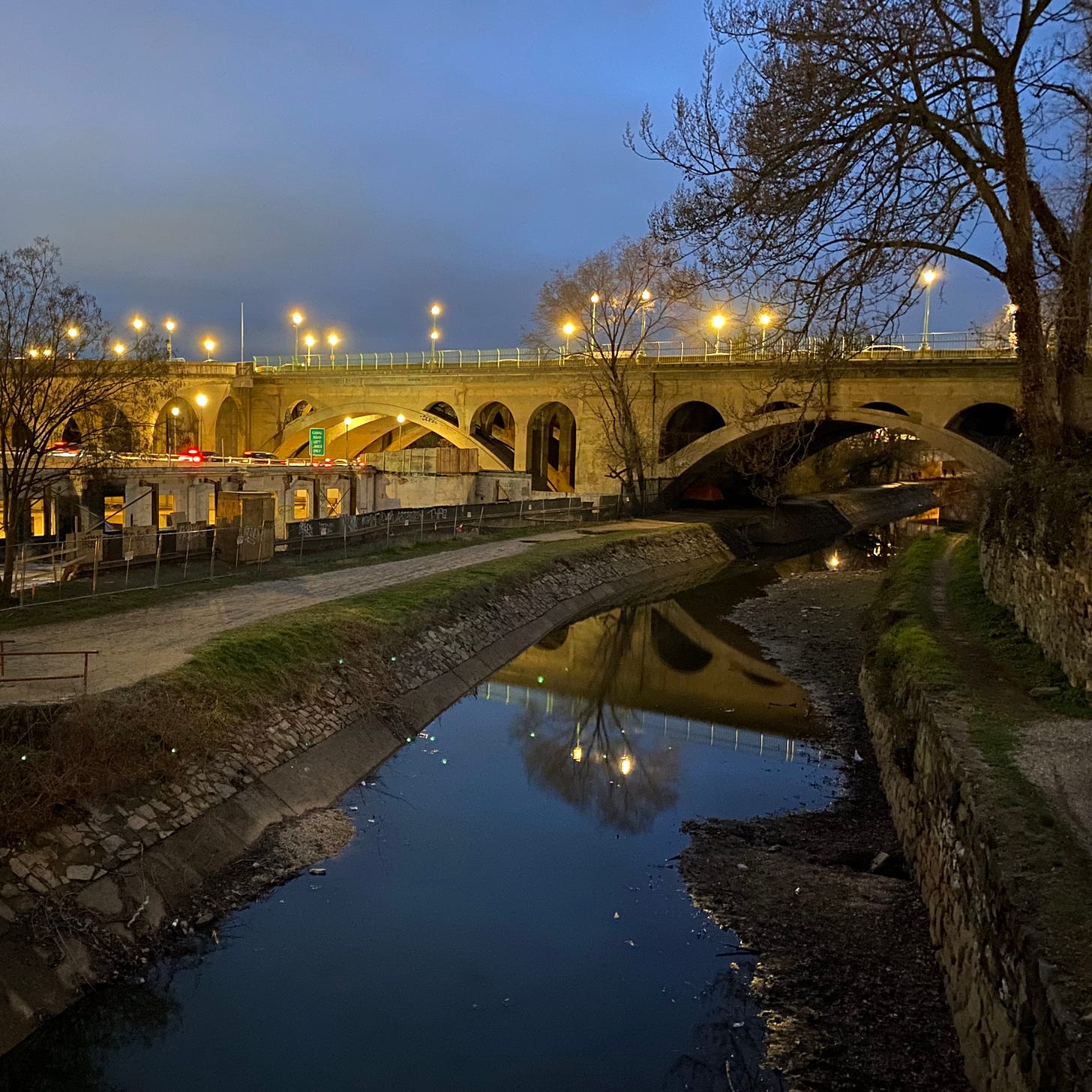
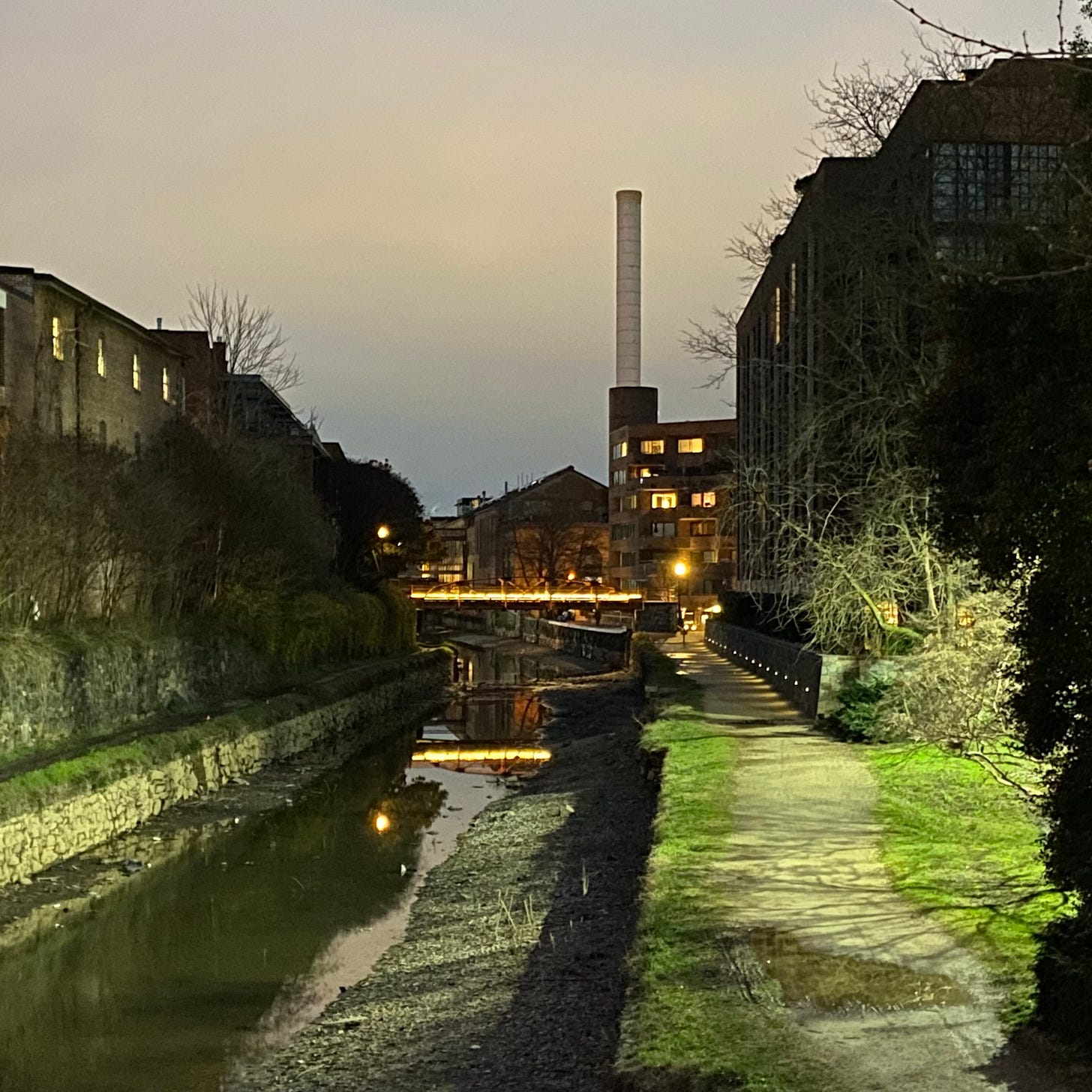
Hi Daisy Jones, didn't you live in South Africa.?
Lovely. A true gem, the C and O. I didn't know that part about the Water Gate!